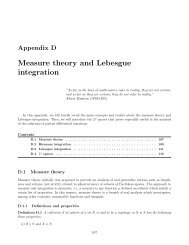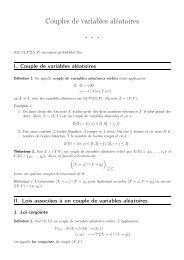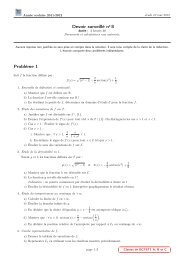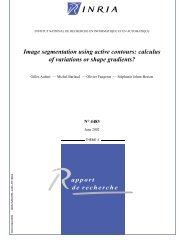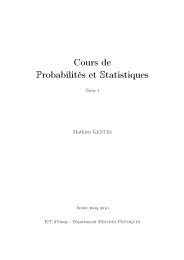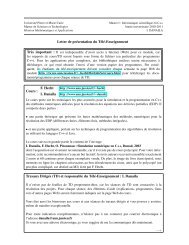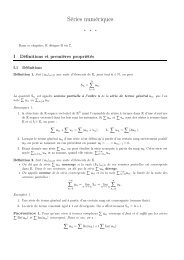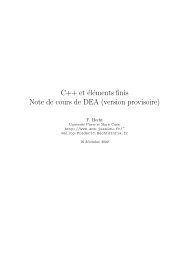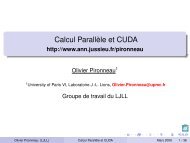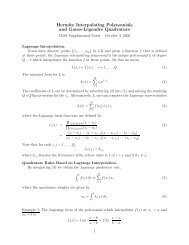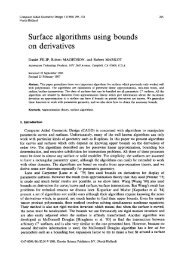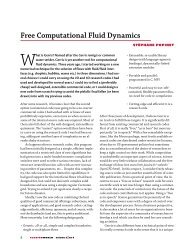Anisotropic Delaunay Mesh Adaptation for Unsteady Simulations
Anisotropic Delaunay Mesh Adaptation for Unsteady Simulations
Anisotropic Delaunay Mesh Adaptation for Unsteady Simulations
You also want an ePaper? Increase the reach of your titles
YUMPU automatically turns print PDFs into web optimized ePapers that Google loves.
188 C. Dobrzynski and P. Frey<br />
split e and insert new vertex (<strong>Delaunay</strong> kernel)<br />
endif<br />
while ( T is modified )<br />
2. loop over mesh elements /* quality optimization */<br />
per<strong>for</strong>m edge flips<br />
per<strong>for</strong>m vertex relocation<br />
end <strong>for</strong><br />
while ( triangulation T is modified ).<br />
Notice that this algorithm (composed of two levels of imbricated loops) always<br />
terminates in a finite number of iterations. Indeed, mesh modifications are<br />
only applied if they result in the mesh quality improvement. An infinite loop<br />
could potentially occurs between several configurations if the analysis is based<br />
on the edge lengths only. For instance, if the values of l min and l max are too<br />
close, the edge split and the edge collapse operations could possibly lead to a<br />
previous configuration. However, since we apply the mesh modification if the<br />
quality is strictly improved, this case cannot happen in our scheme. In addition,<br />
<strong>for</strong> efficiency purposes, we have restricted the overall number of iterations to a<br />
maximum value.<br />
The complexity of the algorithm is related to the number of loops that are<br />
per<strong>for</strong>med. The inner loops are in O(nt), where nt is the number of mesh elements.<br />
Since we limit the nmber of outer loop to a maximum value c, the overall<br />
complexity is cO(nt), i.e., linear in number of mesh elements.<br />
4.3 Application to Large Displacements Problems<br />
As pointed out in the introduction, our local anisotropic mesh adaptation approach<br />
allows us to handle rigid-body displacement problems without difficulty.<br />
Fluid-structure interactions involves a moving structure, rigid or de<strong>for</strong>mable,<br />
and afluid in flow around a part or the whole structure. The domain boundary<br />
is moving, however moving only boundary vertices would quickly result in an<br />
invalid mesh. There<strong>for</strong>e, internal vertices are also relocated using alinear elasticity<br />
analogy [5]. Actually, the whole procedure is straight<strong>for</strong>ward and can be<br />
decomposed in three successive stages: given a field of displacements prescribed<br />
at the domain boundaries, e.g., resulting from afluid calculation, (i) solve alinear<br />
elasticity equation as suggested by [5] to define adiscrete displacement field<br />
at all mesh vertices and (ii) move the mesh vertices to the positions prescribed<br />
by this field and (iii) optimize the resulting mesh.<br />
This boundary value problem assumes that part of the boundary remains<br />
fixed as another part is moving. It reads:<br />
⎧<br />
⎨ −divσ(u) =f in Ω<br />
u = 0 on Γ fixed<br />
⎩<br />
σ(u) · n = 0 on ∂Ω\Γ fixed



